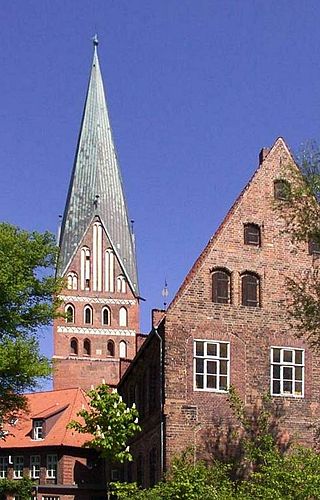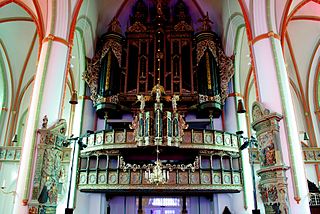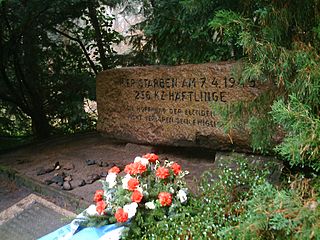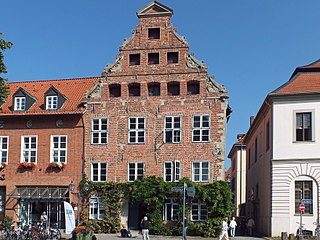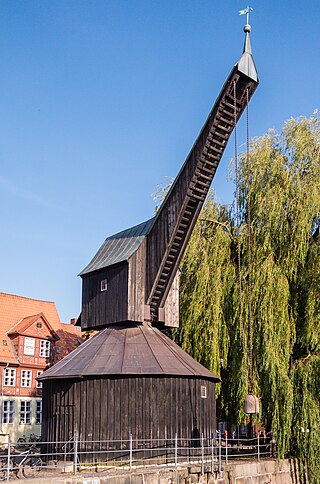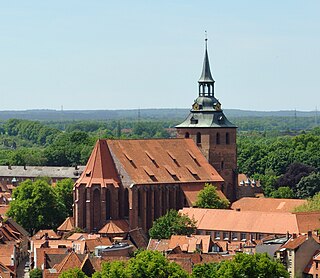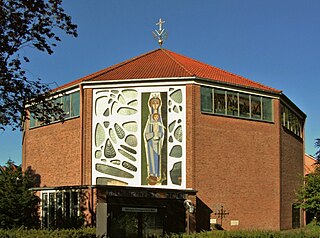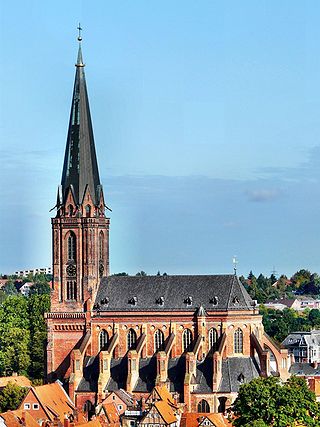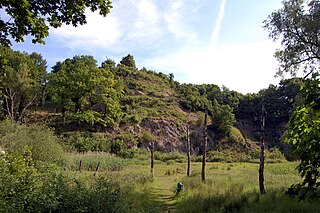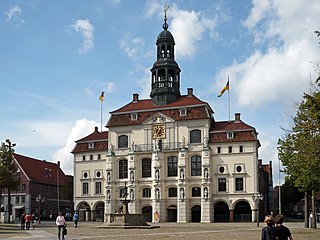13 Sights in Lüneburg, Germany (with Map and Images)
Legend
Welcome to your journey through the most beautiful sights in Lüneburg, Germany! Whether you want to discover the city's historical treasures or experience its modern highlights, you'll find everything your heart desires here. Be inspired by our selection and plan your unforgettable adventure in Lüneburg. Dive into the diversity of this fascinating city and discover everything it has to offer.
Sightseeing Tours in Lüneburg1. St. John's Church
The Church of John the Baptist is the oldest Lutheran church in Lüneburg, Germany. It is located in the city centre. Lüneburg is on the European Route of Brick Gothic and the church is an example of this style. With its 108-meter high spire, it is the second tallest church tower in Lower Saxony – after St. Andrew's in Hildesheim.
Wikipedia: St. John's Church, Lüneburg (EN), Website, Heritage Website
2. Orgeln von St. Johannis
The organs of St. Johannis (Lüneburg) are the large historic main organ on the west gallery and the choir organ in the five-aisled Gothic hall church of St. Johannis in Lüneburg. The large instrument received its present form mainly in 1553 and through the Baroque extensions. Today it has three manuals and 51 stops. In addition, there is a two-manual choir organ from the Kuhn company from 2010 with 23 stops in the church.
3. Ehrenmal für gestorbene KZ-Häftlinge
The memorial in the Tiergarten near the Lüneburg train station commemorates a mass grave of 256 concentration camp prisoners whose transport from a subcamp of the Neuengamme concentration camp in Wilhelmshaven was bombed on April 7, 1945. Up to 80 of the mostly injured and weakened prisoners, who could not be transported further, were shot by their guards on April 11, 1945 and are buried here together with the victims of the bombing raid.
4. Heinrich-Heine-Haus
The Heinrich-Heine-Haus in Lüneburg is a patrician house from the 15th/16th century, in which the parents of the poet Heinrich Heine lived. It is now used by municipal authorities and cultural institutions and contains a scholarship apartment for writers.
5. Theater Lüneburg
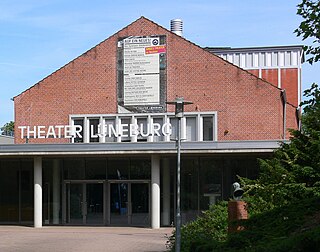
The Theater Lüneburg is a three-genre theatre in Lüneburg with its own ensembles for drama, music theatre and ballet. The venues are the Großes Haus with 542 seats, the Studio T.NT with 99 seats and the Young Theatre T.3.
6. Old Crane
The Old Crane is a historic harbour crane at the former Ilmenau harbour in Lüneburg. The crane, built in 1797 and one of the most powerful in all of northern Germany at the time, still shapes the image of the water district today and is considered one of the city's landmarks.
7. St. Michael Church
St. Michaelis is one of the main churches in Lüneburg, Lower Saxony, Germany. It was first an abbey church of the former monastery of Benedictines, built from 1376 in brick Gothic style. It became Lutheran during the Reformation. Johann Sebastian Bach was for two years a pupil at the school of St. Michaelis.
Wikipedia: St. Michaelis, Lüneburg (EN), Website, Heritage Website
8. St. Marien
St. Mary's Church is a Roman Catholic church in Lüneburg, Lower Saxony, Germany. It is the parish church of the parish of St. Marien in the deanery of Lüneburg in the diocese of Hildesheim, bears the patronage of the Virgin and Mother of God, who was conceived without original sin, and stands on Friedenstraße in the Rotes Feld district.
9. Gedenkstein Standort Jüdische Synagoge
The synagogue in Lüneburg was the religious center of the local Jewish community. The foundation stone was laid in 1892 on the street Am Schifferwall, and the synagogue was inaugurated in 1894. The municipality had to sell the building in 1938 and have it demolished.
10. Saint Nicholas Church
St. Nicolai is a church and Lutheran parish in Lüneburg, Lower Saxony, Germany. It is one of three main churches in the town, all built in brick Gothic style. The church, dedicated to St. Nicholas, is a basilica with three naves, built from 1407 to 1440. It features a "star" rib vault that is unique in Northern Germany. When the Reformation was introduced in Lüneburg in 1530, the church became Lutheran. The high steeple was added in the 19th century.
Wikipedia: St. Nicolai, Lüneburg (EN), Website, Heritage Website
11. Kalkberg
The Lüneburg Kalkberg is the cap rock of a salt dome in the western part of the German town of Lüneburg. The Kalkberg was a gypsum mine during the Middle Ages, but is today a Naturschutzgebiet and a common meeting place for city residents.
12. Lüneburg Water Tower

Lüneburg Water Tower is a water tower in the southeastern part of the Lüneburg old town in Lower Saxony, Germany, built by the architect Franz Krüger (1873–1936), from designs by Richard Kampf. Its erection was initiated on 3 October 1905, and the tower was taken into use in November 1907. The water tower is 55 metres (180 ft) tall, and is the tallest building in the Lüneburg old town that is not a church. It stands between the considerably newer Nordlandhalle and the Johanneum, the latter now used as a school. The tower consists of a square base of 18 metres (59 ft) and a round portion which is walled up around a 500 cubic metres (18,000 cu ft) large water tank. The upper part is carried by 16 solid columns.
13. Altes Rathaus
The Lüneburg Town Hall is the headquarters of the council and administration of the Hanseatic City of Lüneburg in Lower Saxony. The building complex was built around 1230 and has been expanded over centuries. It is an example of medieval and early modern secular architecture in northern Germany.
Share
How likely are you to recommend us?
Disclaimer Please be aware of your surroundings and do not enter private property. We are not liable for any damages that occur during the tours.
